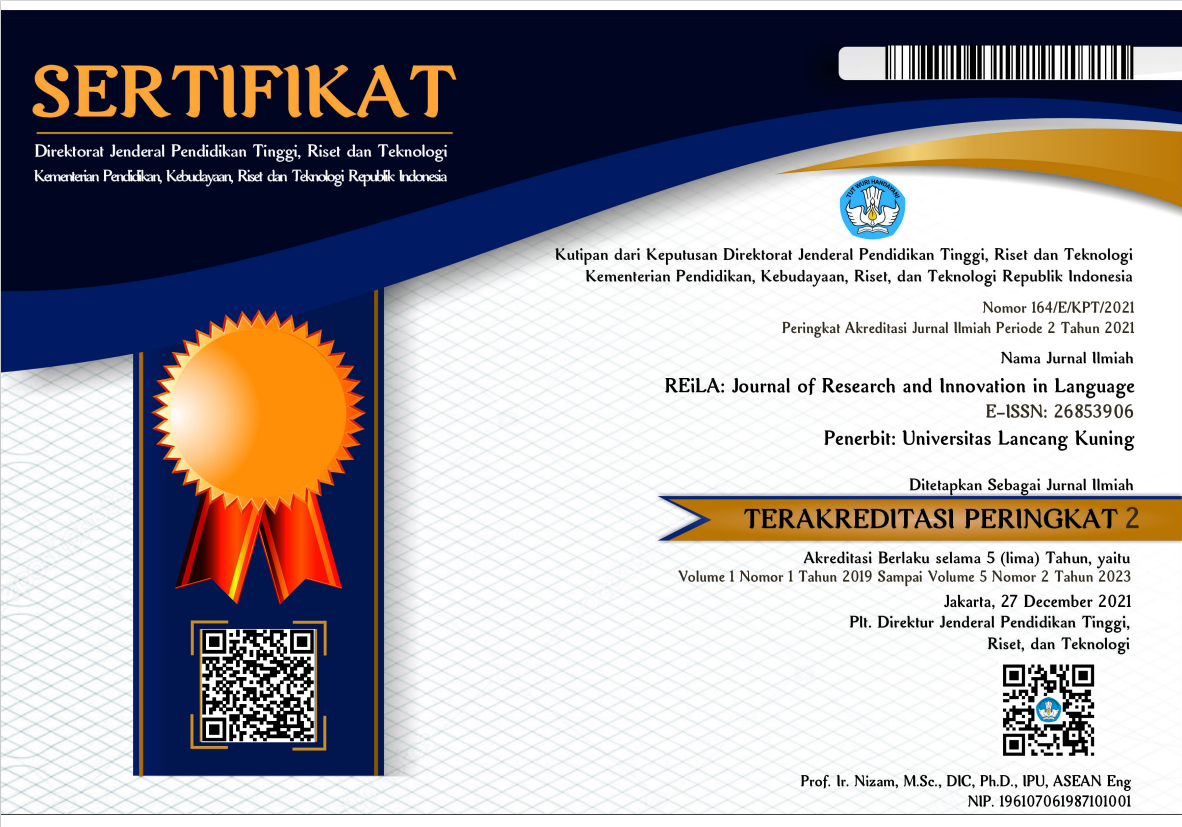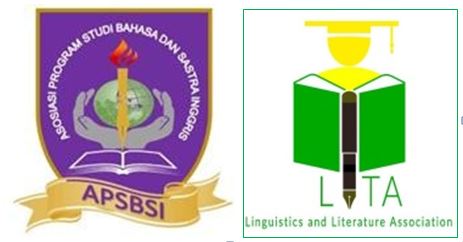A Closer Look on the Oblique Plural of Words Terminating in the Letter Yey: Pashto Grammatical Case
Abstract
This article studies the grammatical case of the Pashto language, with its focus on the oblique plural case of words terminating in different types of the letter ی /Yey/, where such cases of words are formed by replacing its various types with either و /waaw/, or یو /yow/. A summative approach to qualitative content analysis was used to analyse the data. The current grammatical rules of such words were studied in-depth but did not include rules where the oblique plurals thereof end in یانو /yaanow/. The study aimed to explore the problems of related grammatical rules and the trend of making such plurals where, except for the long Yey ې, the writers tend to replace most types of the letter Yey with یو /yow/. The paper also investigates what type of the letter Yey ی must be replaced with و and what type with یو, and whether replacing every type thereof with و or replacing all with یو will create ambiguity concerning the meaning of words used in their oblique plural cases. The study found that replacing all or most types of this letter with و or replacing all or most types thereof with یو results in ambiguity leading to the wrong meaning of words. In addition, findings hereof showed that only the feminine Yey ۍ should be replaced with یو. A fresh approach to making the oblique plural cases of such words has been introduced, and new rules are proposed, thereby facilitating writers in figuring out the correct oblique plural case of words. This study is the first attempt at unearthing the problems associated with the oblique plurals, as prior to this, no such study has been done in regard thereto.
Downloads
References
Ahmad, D. A., & Khan, D. A. (2018). Pashto adabi tolana: History and contributions. Pashto, 47(655), 11–22.
Al-Bataineh, H. (2019). The syntax of Arabic vocatives. Brill’s Journal of Afroasiatic Languages and Linguistics, 12(2), 328–360. https://doi.org/10.1163/18776930-01202100
Alkuwaihes, G. (2017). The derivation of vocative exclamatives with the particle ʔaya in Gulf Arabic. International Journal of Language and Linguistics, 5(5), 121-126. https://doi.org/10.11648/j.ijll.20170505.11
Atlamaz, Ü. M. İ. T. (2012). Ergative as accusative case: Evidence from Adiyaman Kurmanji [Thesis, Boğaziçi University]. Manuscript Repo: http://web.boun.edu.tr/umit.atlamaz/pdf/ua_ma_thesis.pdf
Austin, P. K. (2008). One thousand languages living, endangered, and lost (First Edition). Berkeley and Los Angeles: University of California Press.
Ayazi, M. A. (1939). Qavāʻid-i Pushtū. Pushtu tolanah. http://afghandata.org:8080/xmlui/handle/20.500.12138/18385
Azadi Radio Pashto. (2020, June 30). غزني کې د بټریو د تولید يوه فابريکه په کار پیل کوي. ازادي راډیو. https://pa.azadiradio.com/a/30697988.html
Azadi Radio Pashto. (2021, July 23). ښوونیز مرکزونه خپل فعالیت بیا پیلوي؛روغتیا وزارت: لا هم د کرونا خطر شته. ازادي راډیو. https://pa.azadiradio.com/a/31373877.html
BBC Pashto. (2013, January 18). د ایکو غړي د اضافي مالیو لرې کولو پر سر بحث کوي. https://www.bbc.com/pashto/afghanistan/2013/01/130118_hh-eco-iran-summit
BBC Pashto. (2020, February 28). “قطر کې د ۳۰ هېوادونو د استازو په شتون کې د طالبانو او امریکایانو ترمنځ د سولې تړون لاسلیکیږي.” https://www.bbc.com/pashto/afghanistan-51669874
Brown, K., & Ogilvie, S. (2009). Concise encyclopedia of languages of the world. Elsevier.
Comrie, B. (1987). The world’s major languages. Oxford University Press.
Lorimer, J. G. (1902). Grammar and vocabulary of waziri Pashto. Office of the Superintendent of Government Printing, India.
David, A. (2013). Descriptive grammar of Pashto and its dialects. De Gruyter Mouton.
Demir, C. (2020). Teaching semantic considerations of ablative and locative cases in Turkish-to-English translated texts. Australian Journal of Applied Linguistics, 3(3), 233–254. https://doi.org/10.29140/ajal.v3n3.365
Deutsche Welle Pashto. (2012, March 19). يو آخيم ګاوک نن په رسمي ډول په خپل کار پیل کوي.
Deutsche Welle Pashto. (2018, January 14). په کابل کې د آلمان سفارت بیرته خپل فعالیت پیلوي.
Dinakhel, M. A. (2018). An analysis of conflict between Pashto and Dari languages of Afghanistan central Asia Journal, 83(1), 79–99. https://doi.org/10.54418/ca-83.30
Dixon, R. M. W. (1994). Ergativity (Cambridge Studies in Linguistics). Cambridge University Press.
Dost, D. M. (1974). د افغانستان ژبی او توکمونه. Pushtu Tolanah.
Hamuddin, B., Rahman, F., Pammu, A., Baso, Y. S., & Derin, T. (2020). Selecting content analysis approach in social networking sites: What’s the best for cyberbullying studies?. Indonesian Research Journal in Education IRJE, 4(2), 347–364. https://doi.org/10.22437/irje.v4i2.10202
Hayat, A. W. (2019). The Impact of Arabic orthography on literacy and economic development in Afghanistan. International Journal of Education, Culture and Society, 4(1), 1-12. https://doi.org/10.11648/j.ijecs.20190401.11
Hotak, M. M. (2016, January 14). Da Pashto tolaney aw baarra galai faisaley. Taand.com. https://taand.com/main/?p=61595
Hsieh, H. F., & Shannon, S. E. (2005). Three approaches to qualitative content analysis. Qualitative Health Research, 15(9), 1277–1288. https://doi.org/10.1177/1049732305276687
Kasher, A. (2013). The vocative as a “speech act” in early Arabic grammatical tradition. Histoire Épistémologie Langage, 35(1), 43–159.
Kızıltan, N., & Atlı, I. (2018). An analysis of the accusative case use of learners of Turkish as a foreign language. Ana Dili Eğitimi Dergisi, 6(3), 730-746. https://doi.org/10.16916/aded.427122
Masood, T. (2014). Structural case licensing in pashto: a minimalist perspective. Department of English & Applied Linguistics University of Peshawar.
Masood, T., & Rahman, M. (2013). Structural case assignment in Pashto unaccusatives. Journal of Humanities & Social Sciences, 21(1), 29–50.
Masood, T., & Rahman, M. (2021). A minimalist account of structural case assignment in Pashto dative constructions. Kashmir Journal of Language Research, 23(2), 1–22.
Mohammadirad, M., & Rasekh-Mahand, M. (2019). Functions of the dative: An Iranian perspective. Sprachtypologie Und Universalienforschung, 71(4), 539–575.
Mostefa, D., Choukri, K., & Brunessaux, S. (2012). New language resources for the Pashto language. LREC. Published. http://www.lrec-conf.org/proceedings/lrec2012/pdf/824_Paper.pdf
Mouche, R., Renfro, A., Marshall, & Lance. (2019, May 15). Persian syntax [Poster session]. Persian language--Syntax, Carver Gym (Bellingham, Wash.), United States. https://cedar.wwu.edu/scholwk/2019/
Ostler, N. (2012). Harold F. Schiffman (ed.): Language policy and language conflict in Afghanistan and its neighbors: The changing politics of language choice. Language Policy, 12(4), 387–389. https://doi.org/10.1007/s10993-012-9259-2
Owens, J. (1998). Case and proto-Arabic, Part I. Bulletin of the School of Oriental and African Studies, 61(1), 51–73. https://doi.org/10.1017/s0041977x00015755
ÖZdemir, H., & öKten, C. E. L. I. L. E. (2015). Accusative case as both “cause” and “solution” for language learning plateau in TFL. International Periodical for the Languages, Literature and History of Turkish or Turkic, 10(15), 379–400. https://doi.org/10.7827/TurkishStudies.8725
Paul, L. (2017). Schiffman, Harold F. (Hg.): Language policy and language conflict in Afghanistan and its Neighbors. 2012. Orientalistische Literaturzeitung, 112(3), 259–260. https://doi.org/10.1515/olzg-2017-0082
Penzl, H. (1957). A grammar of Pashto, a descriptive study of t the dialect of Kandahar, Afghanistan. Lingua, 7, 103–104. https://doi.org/10.1016/0024-3841(57)90069-4
Qizi, R. K. A. (2020). The history of formation of cases in Hindi language. International Journal of Scientific & Technology Research, 9(1), 1068–1070.
Rahman, G., & Bukhari, N. H. (2014). Case System in Pashto. Kashmir Journal of Language Research, 17(1), 173–193.
Rahman, G., & Bukhari, N. H. (2020). Agreement in Pashto. International Journal of Innovation, Creativity and Change, 14(11), 1154–1173.
Rasulzada, A. A. (2016). Pashto yeegane. https://easyjoob.com/pashto-yeegane/
Raverty, H. G. (1867). A dictionary of the puk’hto, pus’hto, or language of the Afghans. Williams and Norgate.
Rishtin, S. (2003). Pashto grammar (Zhabshodana). Alazhar Khparandiya Tolanah.
Roos-Keppel, G. O. S., & Khan, K. A. A.-G. (1922). A manual of Pushtu. Humphrey Milford, Oxford University Press.
Sklar, E. S. (1976). The possessive apostrophe: The development and decline of a Crooked Mark. College English, 38(2), 175-183. https://doi.org/10.2307/376342
Tegey, H., & Robson, B. (1996). A reference grammar of Pashto. Center for Applied Linguistics, Washington, DC. https://eric.ed.gov/?id=ED399825
Trijp, R. (2017). The evolution of case grammar. Berlin: Language Science Press. https://langsci-press.org/catalog/view/52/182/477-2
Trumpp, E. (1873). Grammar of the Pashto or language of the Afghans: Compared with the Iranian and North-Indian Idioms. Trübner.
Verbeke, S., & de Cuypere, L. (2009). The rise of ergativity in Hindi: Assessing the role of grammaticalization. Folia Linguistica Historica, 43(30). 367-389. https://doi.org/10.1515/flih.2009.006
Verbeke, S., Kulikov, L., & Willems, K. (2015). Oblique case-marking in Indo-Aryan experiencer constructions: Historical roots and synchronic variation. Lingua, 163, 23–39. https://doi.org/10.1016/j.lingua.2015.05.009
VOA Pashto. (2016, August 2). روباتونه عملي دندې پیل کوي. https://www.pashtovoa.com/a/robots-getting-jobs-technalogy/3445817.html
VOA Pashto. (2020, June 17). افغانستان بله اونۍ پاکستان ته صادرات پیلوي. https://www.pashtovoa.com/a/afghanistan-exported-to-pakistan/5465967.html
Zyar, M. A. (1978). Pashto Grammar (2nd ed.). Adab Pohanzay.










